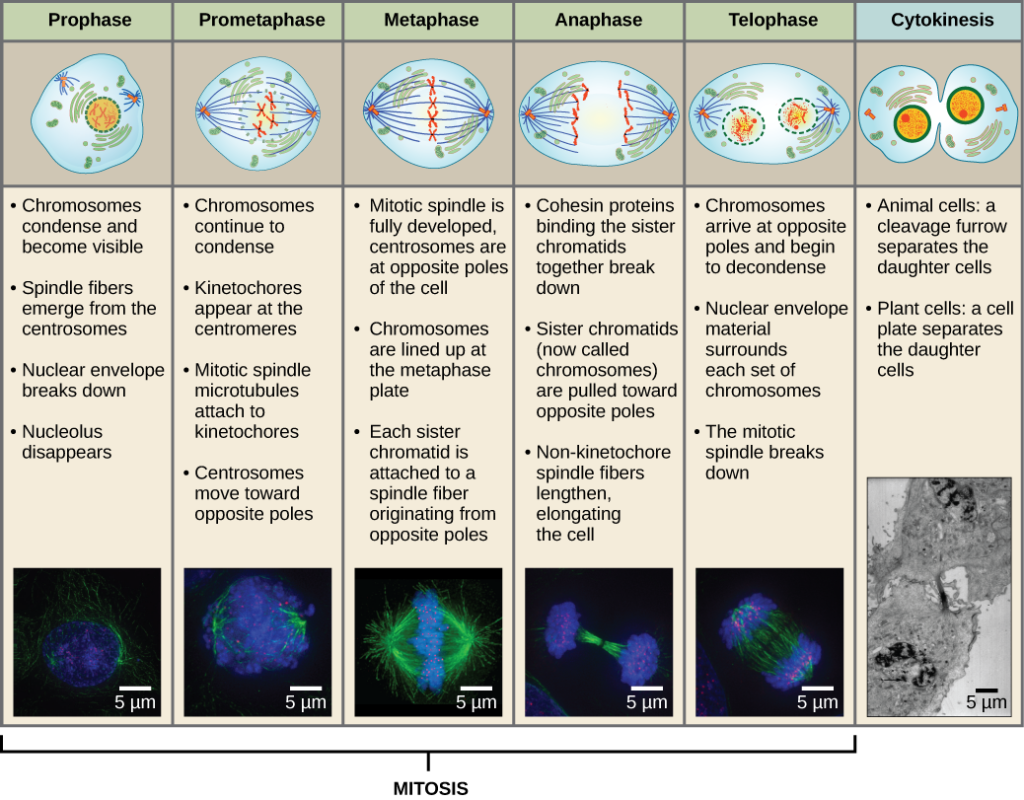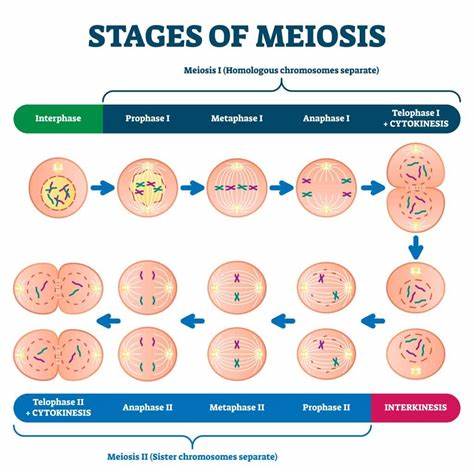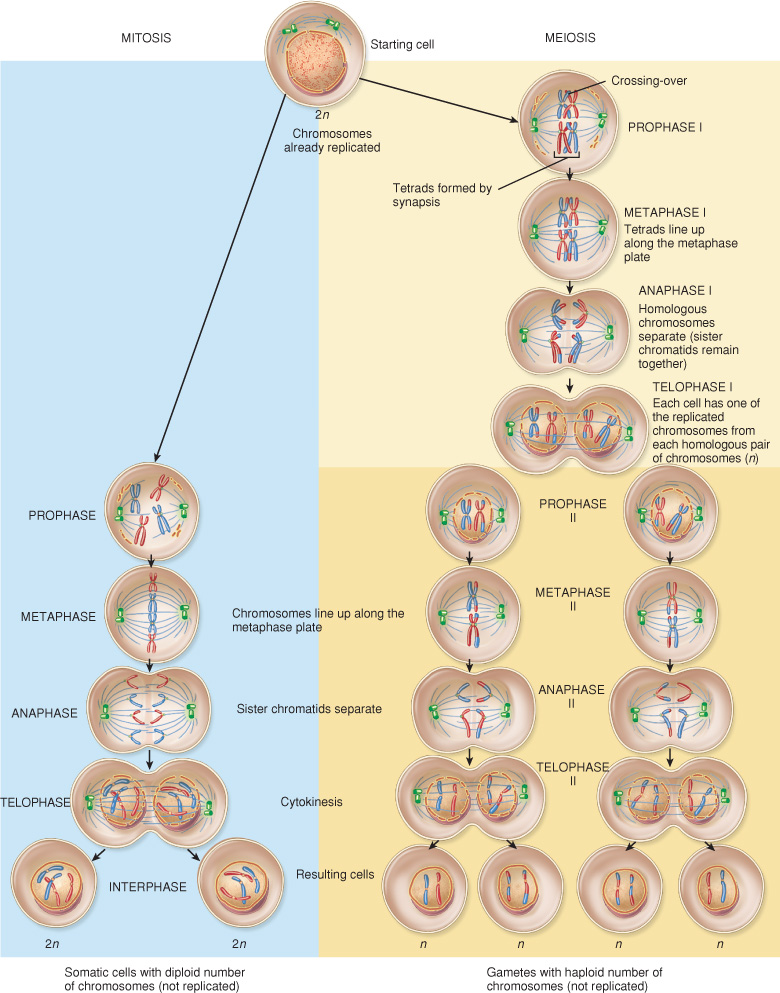Makindo Medical Notes"One small step for man, one large step for Makindo" |
|
|---|---|
| Download all this content in the Apps now Android App and Apple iPhone/Pad App | |
| MEDICAL DISCLAIMER: The contents are under continuing development and improvements and despite all efforts may contain errors of omission or fact. This is not to be used for the assessment, diagnosis, or management of patients. It should not be regarded as medical advice by healthcare workers or laypeople. It is for educational purposes only. Please adhere to your local protocols. Use the BNF for drug information. If you are unwell please seek urgent healthcare advice. If you do not accept this then please do not use the website. Makindo Ltd. |
Mitosis and Meiosis
-
| About | Anaesthetics and Critical Care | Anatomy | Biochemistry | Cardiology | Clinical Cases | CompSci | Crib | Dermatology | Differentials | Drugs | ENT | Electrocardiogram | Embryology | Emergency Medicine | Endocrinology | Ethics | Foundation Doctors | Gastroenterology | General Information | General Practice | Genetics | Geriatric Medicine | Guidelines | Haematology | Hepatology | Immunology | Infectious Diseases | Infographic | Investigations | Lists | Microbiology | Miscellaneous | Nephrology | Neuroanatomy | Neurology | Nutrition | OSCE | Obstetrics Gynaecology | Oncology | Ophthalmology | Oral Medicine and Dentistry | Paediatrics | Palliative | Pathology | Pharmacology | Physiology | Procedures | Psychiatry | Radiology | Respiratory | Resuscitation | Rheumatology | Statistics and Research | Stroke | Surgery | Toxicology | Trauma and Orthopaedics | Twitter | Urology
Related Subjects: |DNA and RNA short notes |DNA replication |DNA structure in Nucleus |Mitosis and Meiosis |Cell Cycle |Ribosomes |Microtubules |Mitochondria |Smooth and Rough Endoplasmic Reticulum
Mitosis and meiosis are two types of cell division processes that ensure the continuity of life. Mitosis results in two identical daughter cells, while meiosis produces four genetically unique gametes. Both processes are crucial for growth, development, and reproduction in organisms.

Phases of Mitosis
- Prophase :
- Chromatin condenses into visible chromosomes.
- Each chromosome consists of two sister chromatids joined at the centromere.
- The mitotic spindle begins to form, and the nuclear envelope breaks down.
- Metaphase :
- Chromosomes align at the metaphase plate (center of the cell).
- Spindle fibers attach to the centromeres of the chromosomes.
- Anaphase :
- Sister chromatids are pulled apart by the spindle fibers towards opposite poles of the cell.
- Telophase :
- Chromosomes reach the poles and begin to decondense back into chromatin.
- The nuclear envelope re-forms around each set of chromosomes.
- The mitotic spindle disassembles.
- Cytokinesis :
- The cytoplasm divides, resulting in two daughter cells with identical genetic material.
- In animal cells, a cleavage furrow forms to divide the cell.
- In plant cells, a cell plate forms to separate the daughter cells.
Meiosis

Meiosis is a process of cell division that reduces the chromosome number by half, producing four genetically unique gametes (sperm or eggs). It is essential for sexual reproduction and genetic diversity.
Phases of Meiosis
Meiosis consists of two successive divisions: meiosis I and meiosis II.
Meiosis I
- Prophase I :
- Chromosomes condense, and homologous chromosomes pair up in a process called synapsis.
- Crossing over occurs, where homologous chromosomes exchange genetic material.
- The nuclear envelope breaks down, and the spindle apparatus forms.
- Metaphase I :
- Homologous chromosome pairs align at the metaphase plate.
- Spindle fibers attach to the centromeres of each homologous chromosome.
- Anaphase I :
- Homologous chromosomes are pulled apart towards opposite poles of the cell.
- Sister chromatids remain attached at their centromeres.
- Telophase I :
- Chromosomes reach the poles and begin to decondense slightly.
- The nuclear envelope may re-form, and the cell undergoes cytokinesis, resulting in two haploid cells.
Meiosis II
- Prophase II :
- Chromosomes condense again, and the spindle apparatus forms in each haploid cell.
- The nuclear envelope breaks down.
- Metaphase II :
- Chromosomes align at the metaphase plate in each haploid cell.
- Spindle fibers attach to the centromeres of the sister chromatids.
- Anaphase II :
- Sister chromatids are pulled apart towards opposite poles of each cell.
- Telophase II :
- Chromatids reach the poles, decondense into chromatin, and are enclosed by re-formed nuclear envelopes.
- Cytokinesis follows, resulting in four genetically unique haploid gametes.
Key Differences between Mitosis and Meiosis
- Purpose :
- Mitosis : For growth, development, and tissue repair; produces identical daughter cells.
- Meiosis : For sexual reproduction; produces genetically diverse gametes.
- Number of Divisions :
- Mitosis : One division cycle resulting in two daughter cells.
- Meiosis : Two division cycles (meiosis I and II) resulting in four gametes.
- Genetic Variation :
- Mitosis : No genetic variation; daughter cells are identical to the parent cell.
- Meiosis : Increases genetic variation through crossing over and independent assortment.
- Chromosome Number :
- Mitosis : Maintains the same chromosome number as the parent cell (diploid).
- Meiosis : Reduces chromosome number by half (haploid).
- Homologous Chromosomes :
- Mitosis : Homologous chromosomes do not pair up.
- Meiosis : Homologous chromosomes pair up and undergo crossing over.

Summary
Mitosis and meiosis are essential processes of cell division. Mitosis results in two identical daughter cells for growth and repair, while meiosis produces four genetically diverse gametes for sexual reproduction. Understanding the phases and key differences between mitosis and meiosis is crucial in comprehending how organisms grow, develop, and reproduce.